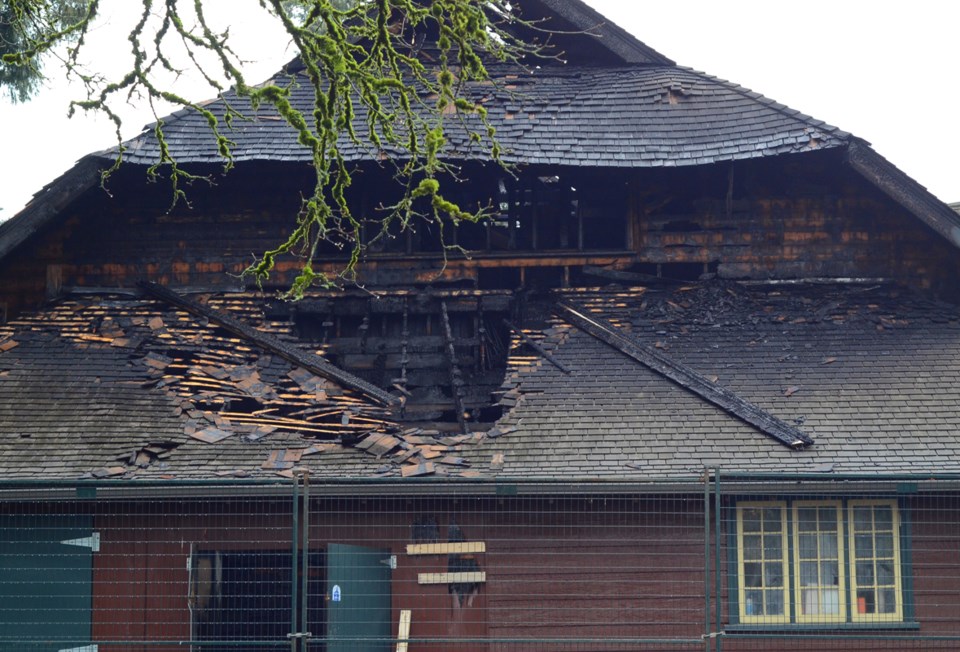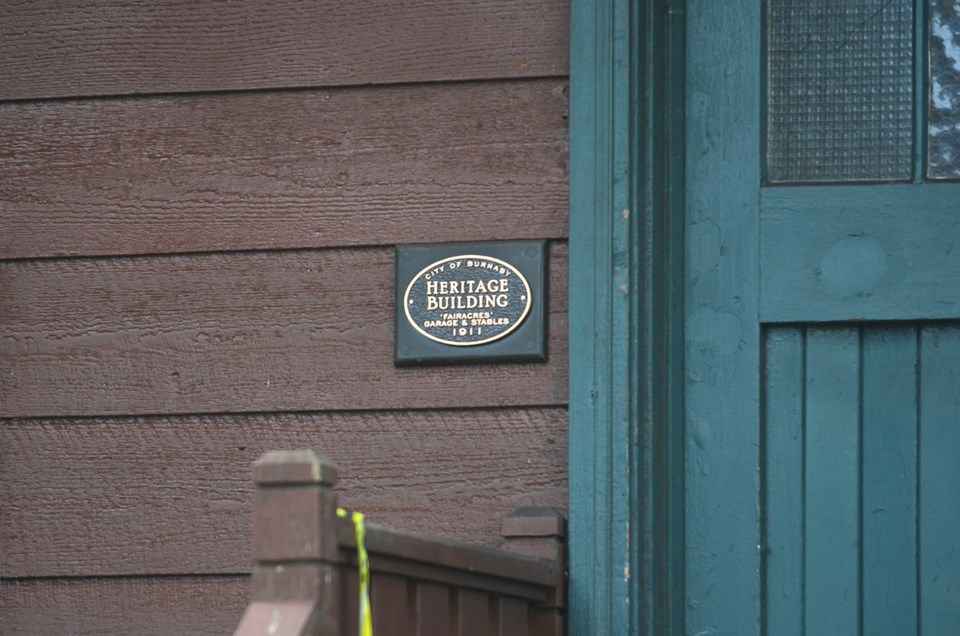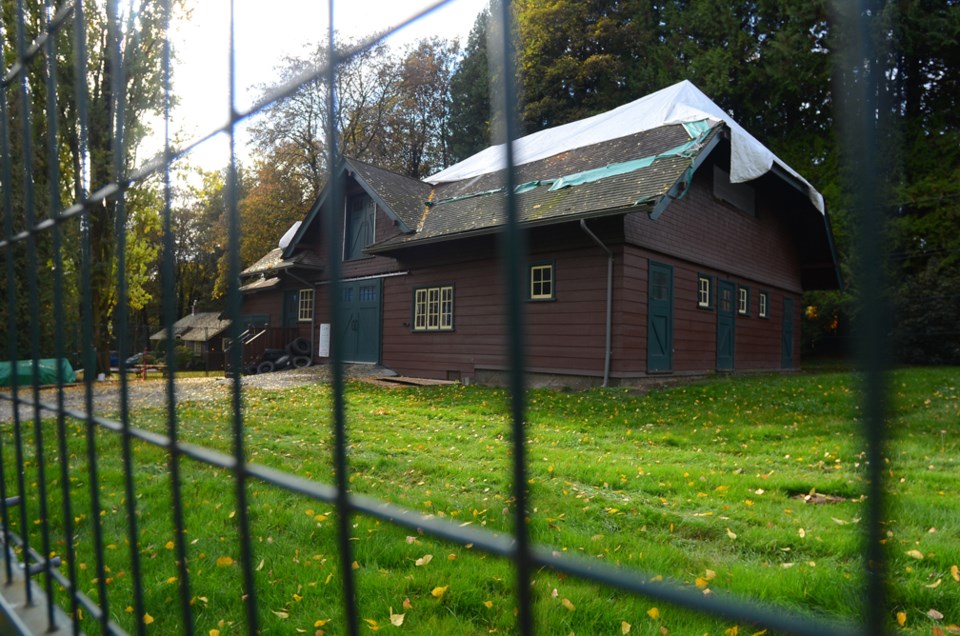Restoration work has finally begun on a city-owned heritage building that went up in flames nine months ago because of a failed power bar.
The 107-year-old Fairacres garage and stables on Deer Lake Avenue near the Burnaby Art Gallery has languished under tarps and behind construction fencing since the fire on the morning of Jan. 11.
By the time fire crews arrived at just after 7 a.m. that day, flames were shooting through the roof at the back of the building, and only an aggressive attack saved it from complete destruction.
The cause of the blaze ended up being a power bar found in the south annex, an area used by parks maintenance staff as a lunch room and for equipment storage.
The power bar had had “multiple appliances plugged into it,” according to a fire investigation report.
“Loose electrical connections caused arcing and overheating,” stated the report.
The building was not equipped with a sprinkler system, a smoke alarm or a fire alarm.
The report also indicates there was no “manual fire protection” (fire extinguishers), but city risk manager Maurice Fitzgerald said portable fire extinguishers were checked at the building 10 months before the fire by AW FireGuard, according to an invoice.

The city spent $75,000 in 2011 to renovate the building, which originally housed a single-vehicle garage, a coach house, tack room, hay loft and stables for carriage, riding and draught horses.
It’s one of 50 heritage buildings and structures in Burnaby protected by individual bylaws, heritage revitalization agreements and land title covenants.
“The Garage and Stables building is important as a record of its era when transportation modes were in transition and the horse-drawn carriage, while still in use, was giving way to the automobile,” states a description on the city website.
“It’s an important building,” city heritage planner Jim Wolf said.
Despite its heritage value, however, no codes require the building to have a sprinkler system or any kind of outward contacting smoke or fire alarm system because it isn’t being used as an office or “public assembly area.”
For about 40 years, it has mostly been used to store Scouts Canada camping equipment.
Higher-level fire protections could run into the tens of thousands of dollars, according to Fitzgerald, and city council hasn’t traditionally had an appetite for installing them unless they’re required by law.
“If there isn’t a code requirement to do it, how much of the taxpayers money should be spent to bring it up to a level beyond what the code requires? That’s always a question that, historically, mayor and council would ask if they’re being asked to invest money in more technical systems for a building like that,” Fitzgerald said.
And it won’t cost the city anything to restore the Ceperly garage and stables because all of the city’s protected heritage buildings are insured for their heritage value, according to Fitzgerald, so the insurers are obligated pay for the building to be restored to its “pre-loss” condition.

For the garage and stables, he estimates that will end up costing between $375,000 and $400,000.
Once the building is restored, Fitzgerald would like to see it used for something other than just storage.
“I think there are people in Parks that share that view,” he said, “but I’m not sure that everyone, historically, has shared that view, and I guess I’m referring to council. Council hasn’t always been really open to the suggestion of spending more money to make it a better facility. And, to that point, if council is more open to that, then the building will get more (fire) protection, obviously, because its use will be different.”
Wolf said the policy of the city’s community heritage commission is that all city-owned heritage buildings will eventually be moved to public use, like the Fairacres steam plant building, which was turned into a pottery studio years after it first got heritage protection.
“We look for opportunities … but we can’t do everything at once,” Wolf said. “We have to do things incrementally and when we have the opportunity to do so, and also we want to do things in terms of a quality product.”



